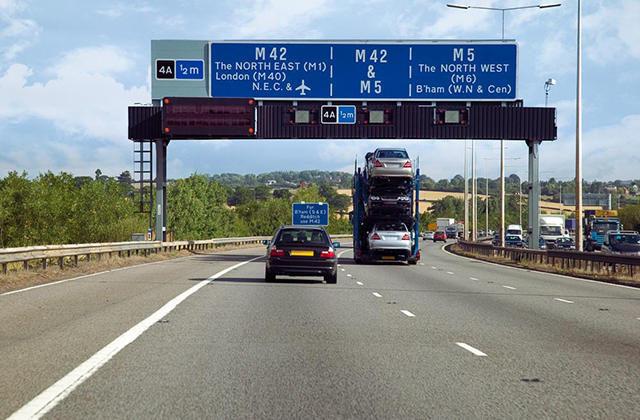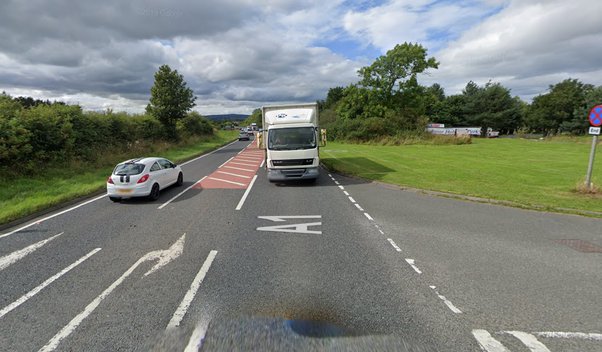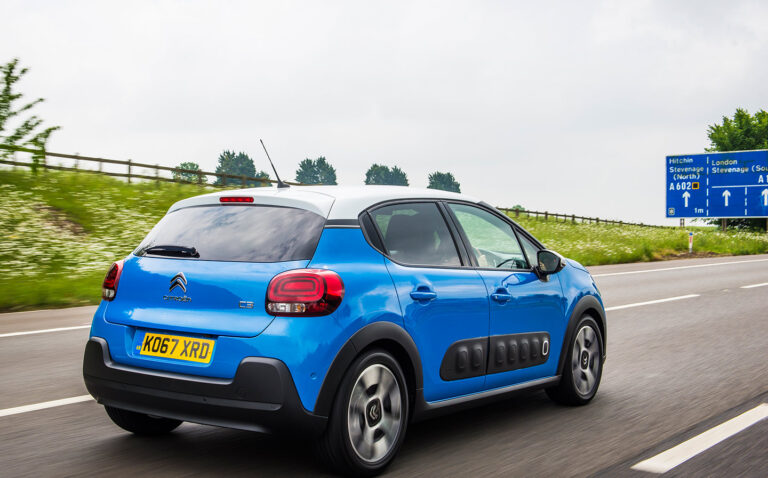Yes, learner drivers are permitted to drive on the A1, as it falls within the category of roads designated as A to C. According to regulations, a learner driver is allowed to navigate all roads, including major highways like the A1, as long as they are accompanied by a competent driver who is over 25 years of age and has held a full driving license for a minimum of 3 years.
Moreover, the A1, being a busier A road, provides an advantageous opportunity for new drivers to gain valuable experience in preparation for eventually learning to drive on motorways. This approach allows learners to gradually build confidence and skills in handling diverse traffic conditions, contributing to their overall development as safe and capable drivers.
General Regulations for Learner Drivers

Licensing Requirements: Learner drivers must obtain a learner’s permit or provisional license before they can start learning to drive.
Supervision: Learner drivers are usually required to have a fully licensed and experienced driver (often an adult) in the vehicle with them while driving.
Learner Plates: Many regions mandate the use of distinctive learner plates or decals to identify vehicles driven by learners.
Restricted Hours: Some places impose restrictions on the hours during which learner drivers can operate a vehicle, especially during nighttime.
Seatbelt Usage: Strict adherence to seatbelt regulations is typically required for both the learner driver and any passengers.
Traffic Laws: Thery must follow all traffic laws, including obeying speed limits, traffic signals, and road signs.
Alcohol and Drugs: Learner drivers are usually prohibited from driving under the influence of alcohol or drugs.
Mobile Phones: Regulations often restrict or prohibit the use of mobile phones while driving for learner drivers.
Road Type Restrictions: Certain road types, such as highways or expressways, may have specific regulations or restrictions for learner drivers.
What is the A1 and Why Does it Matter?
The A1, also known as the Great North Road, holds historical significance as a major road spanning 414 miles from London to Edinburgh in the United Kingdom. Serving as a vital transportation route, the A1 is renowned for its economic importance, historical relevance, and connection to major cities.
Historical and Cultural Heritage:
- Tracing its roots back to Roman times, the A1 stands as a testament to centuries of transportation history.
- A witness to pivotal events like the Jacobite rebellions and the Industrial Revolution, it is deeply intertwined with the cultural narrative of the region.
- It has ingrained itself in literature, music, and local folklore, further solidifying its cultural touchstone status.
Economic Backbone:
- Serving as a vital link between major cities such as London, Edinburgh, and Newcastle upon Tyne, the A1 plays a pivotal role in supporting diverse industries.
- Its expansive reach contributes significantly to the movement of goods and services, bolstering sectors like agriculture, manufacturing, and tourism.
Travel and Tourism Hub:
- It unfolds as a scenic route, showcasing a diverse tapestry of landscapes ranging from serene rolling hills to dynamic urban centers.
- Offering access to national parks, historical landmarks, and tourist attractions, it serves as a conduit for cultural exploration and regional connectivity.
Infrastructure and Development Engine:
- Undergoing constant upgrades and improvements, it reflects ongoing investments aimed at enhancing safety and optimizing traffic flow.
- Noteworthy for its infrastructure advancements, including bridges, tunnels, and bypasses, it actively contributes to regional development and regeneration initiatives.
Challenges and Forward Momentum:
- Balancing the diverse needs of commuters, businesses, and leisure travelers is a continual challenge faced by the A1.
- Emphasizing environmental sustainability remains a priority, necessitating a commitment to minimizing the road’s ecological impact and exploring sustainable travel solutions.
- In the face of technological advancements, the A1 looks toward seamlessly integrating with future transport systems to meet evolving demands.
The A1 transcends its identity as a mere road, emerging as a vital artery that pulses with history, economic vitality, and cultural significance. Understanding its multifaceted role allows us to appreciate not only its past contributions but also its indispensable role in shaping the present and future of the UK.
A1 Road Specifics
Road Types and Regulations:
- Dual Nature: Ir includes motorway sections (A1(M)) with higher speeds and hard shoulders, alongside standard A road sections with single lanes and lower speed limits.
- Learner Driver Restrictions: Learner drivers are restricted from motorways like the A1(M) due to higher speeds and complex traffic patterns. However, they can drive on non-motorway sections of the A1 with a qualified instructor.
- Road Markings and Signage: Differentiating between A1 and A1(M) sections involves paying attention to road signs, markings, blue motorway signs, overhead gantries, and hard shoulders.
Challenges and Considerations:
- Traffic Volume and Complexity: Heavy traffic, especially around major cities and during peak hours, requires drivers to navigate frequent lane changes, merging traffic, and slower speeds in congested areas.
- Variable Speed Limits: Dynamic speed limits based on traffic conditions and weather necessitate attention to overhead signs and gantries for speed adjustments.
- Road Works and Diversions: Common road works and maintenance on the A1 may lead to temporary lane closures and diversions, emphasizing the need to check live traffic updates before journeys.
Exploring the A1:
- Scenic Landscapes: It offers picturesque countryside with rolling hills, green valleys, and charming villages.
- Major Cities and Historical Sites: Connecting vibrant cities like York, Newcastle upon Tyne, and Edinburgh, the A1 provides access to medieval castles, museums, and cultural attractions.
- National Parks: Skirting past national parks like the Yorkshire Dales and Northumberland National Park, it showcases natural beauty and recreational opportunities.
How Can Learner Drivers Use the A1 Safely?
Learner drivers can safely use the non-motorway sections of the A1 by following these crucial steps:
Before You Drive:
- Plan your journey: Choose quieter times with less traffic, ideally outside peak hours or weekends. Avoid driving in challenging weather conditions like heavy rain, fog, or snow.
- Familiarize yourself with the route: Study the A1 layout beforehand, identifying junctions, speed limits, and potential hazards. Consult maps and resources like official highway code information.
- Choose the right instructor: Ensure your instructor is qualified and experienced, with a calm and patient demeanor. Discuss the A1 journey beforehand and set clear expectations.
While Driving:
- Focus on safe driving practices: Maintain proper speed limits, follow road signs and markings, and communicate clearly with other drivers. Be extra cautious and avoid risky maneuvers.
- Stay alert and observant: Scan the road ahead and behind you, check mirrors regularly, and anticipate the actions of other vehicles. Be aware of changing road conditions and potential hazards.
- Don’t rush or feel pressured: Take your time, drive within your comfort zone, and avoid feeling pressured by faster traffic. Remember, the primary goal is to learn and practice safe driving techniques.
- Communicate with your instructor: Ask questions, seek clarification, and express any concerns you might have. Your instructor is there to guide you and provide feedback.
Additional Tips:
- Start with shorter journeys: Build confidence gradually by tackling smaller sections of the A1 before attempting longer distances.
- Take breaks: Driving can be tiring, especially for learners. Plan regular breaks to avoid fatigue and maintain focus.
- Be prepared for emergencies: Familiarize yourself with basic car maintenance and emergency procedures. Keep a phone charger and essential supplies in the car.
- Focus on learning, not getting to your destination: Don’t prioritize speed or time over practicing safe driving habits. Embrace the learning experience and use the A1 as an opportunity to gain valuable skills.
Why Can’t Learner Drivers Use Motorways?

1. Higher Speeds and Complex Traffic:
- Motorways frequently operate at speeds exceeding 70mph, presenting challenges for learner drivers who may find it daunting to manage these higher speeds and maintain safe following distances.
- The complexity of heavy traffic and frequent lane changes demands quick decision-making and confident maneuvering, aspects that learners, with limited experience, may struggle to navigate effectively.
2. Lack of Experience and Skill:
- Learner drivers are in the developmental stages of acquiring driving skills and may not have fully grasped road awareness and hazard perception intricacies.
- The demanding environment of motorways, characterized by a fast pace and limited room for error, could overwhelm learners, potentially leading to hazardous situations.
3. Risk to Themselves and Others:
- Allowing inexperienced drivers on motorways heightens the risk of accidents, not only for learners but also for other road users. Minor errors at high speeds can have severe consequences.
- Learner drivers encountering unexpected situations on motorways may lack the emergency response skills needed, potentially resulting in catastrophic reactions and posing risks to themselves and others.
4. Importance of Controlled Learning:
- Motorways, with their high speeds and intense traffic, are not conducive to the controlled learning necessary for developing safe driving practices.
- Controlled environments with slower speeds and reduced pressure are essential for learners to acquire proper skills and confidence. Introducing motorway complexities too early in a learner’s journey may hinder effective learning.
5. Legal Considerations:
- Many countries, including the UK, explicitly prohibit learner drivers from using motorways due to safety concerns. These regulations aim to ensure the safety of all road users and mitigate the risk of accidents resulting from the inexperience of drivers in high-speed environments.
FAQ’s
Can a learner use the A1?
Yes, Learner drivers are allowed on roads from A to C when accompanied by a competent driver over 25 years old with a full driving license for at least 3 years. However, motorways and certain specific roads may be restricted for learners.
Can learners drive on motorways in NSW?
Yes, Learner drivers can drive on motorways in NSW, but it’s strongly advised to practice with an approved driving instructor before doing so.
Are learner drivers allowed on dual carriageways in Ireland?
No, In Ireland, learner permit holders are generally not allowed on national roads, motorways, rural roads, or dual carriageways.
Who can sit with a learner driver in Northern Ireland?
A: In Northern Ireland, learner drivers must be supervised by someone at least 21 years old, possessing a full EC/EEA license for that type of car for at least three years.
Can learner drivers drive on the A55?
Yes, Learner drivers are restricted from certain sections of the A55 due to motorway regulations, even though most parts of the A55 operate under the National Speed Limit and are accessible to all vehicles.
Final Words
Learner drivers are indeed allowed to use the A1, as part of the broader permission to navigate roads falling under categories A to C. The key requirement for learners is to be accompanied by a competent driver over the age of 25, holding a full driving license for at least 3 years.
Moreover, this inclusive approach enables learners to gain practical experience on various road types, including major highways like the A1. The significance of this allowance extends beyond mere accessibility, providing learners with valuable exposure to diverse traffic conditions and preparing them for the eventual challenge of driving on motorways.
By gradually introducing learners to busier A roads like the A1, regulatory guidelines actively contribute to the development of confident and capable drivers.

